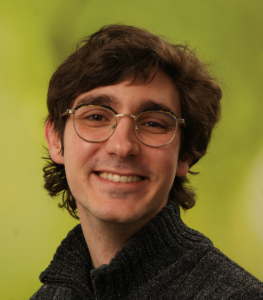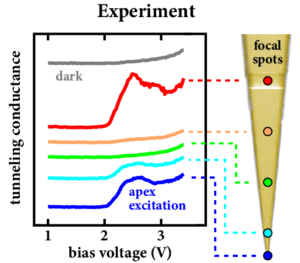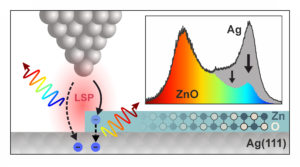We are interested in the spatio-temporal response of solid state surfaces, nanostructures, and molecules following ultrafast laser excitation. Our goal is to obtain an atomistic understanding of photoinduced processes on (sub-) nanometer length and femtosecond time scales by employing novel pump-probe schemes for ultrafast scanning probe microscopy (SPM). We envision to study, drive and control solid state matter in highly non-equilibrium states on ultrashort length und ultrafast time scales.
To achieve this goal, we are putting efforts into the development of ultrafast scanning probe methods, with a strong focus on broadband THz-gated STM combined with femtosecond optical excitation and all-optical plasmon-assisted femtosecond STM. For more information please check our research page and follow our news below.
New member: Andrea Rossetti joins the THz-STM team!
Mar 2025
![]()
We are very happy to welcome Andrea to the ultrafast STM team as of 1st March! During his postdoc, Andrea will set up a broadband MIR light source and couple it to low-temperature STM to study MIR-driven tunneling phenomena and ultrafast processes in quantum materials. The new source complements our selection of ultrafast pulses that we can couple to the STM, and broadens the range of ultrafast phenomena that we expect to explore. Welcome Andrea!
New paper accepted in Nanoscale
Feb 2025
![]()
You are interested in photoexciting an STM junction without directly illuminating it by a laser beam? Then check out our new paper on using plasmonic nanofocusing for the efficient and broadband generation of a localized surface plasmons (LSP) in low-temperature STM! In close collaboration with Chenfang Lin and Takashi Kumagai, we use plasmon-assisted field emission resonance tunneling to characterize the LSP excited remotely via adiabatic nanofocusing of surface plasmon polaritons on a tapered gold STM tip. The results are published in:
Nanoscale, 2025, Advance Article
New paper published in Nano Letters
Feb 2025
![]()
Check out our new paper on plasmonic light emission from ultrathin ZnO/Ag(111) embedded in a plasmonic nanocavity! Using STM luminescence, we show that inelastic charge transport across the interface between hexgonal few-layer ZnO and Ag(111)generates broadband plasmonic luminescence from the biased Ag – ZnO/Ag(111) nanocavity. This emission is spectrally low-pass filtered compared to the bare Ag nanocavity. Our results show that electron injection into the ZnO conduction band gives leads to this filtered plasmonic luminescence, with the “filter onset” dictated by the local electronic structure of the ZnO/Ag(111) heterostructure at the nanoscale. For more details, check out:
H. Wiedenhaupt, Nano Lett. 25, 7, 2870–2877 (2025)
New master student: Justus Hess
Nov 2024
We are happy to welcome Justus as a new member of the THz-STM team. In his master thesis, Justus will set up a second compressor stage in the THz-STM lab for further compression of our 35 fs laser pulses at 1030 nm via nonlinear spectral broadening. Welcome Justus!
New preprint: Picocavity-enhanced near-field optical microscopy with 1 nm resolution
Nov 2024
![]()
In close collaboration with Akitoshi Shiotari, we are pleased to present our recent work on the use of non-contact AFM for optical near-field imaging of surfaces using stable plasmonic picocavities in a cryogenic ultra-high vacuum environment. By illuminating a plasmonic tip attached to a quartz tuning fork sensor oscillating at tapping amplitudes of 1 nm or less, we are able to record light scattering from the extremely small picocavity volume with high sensitivity. The use of focused ion beam polished silver tips ensures strong and highly localised field enhancement with minimal background scatter. This allows us to obtain a reproducible material contrast image of monolayer silicon islands on a silver surface with 1 nm lateral resolution. Thanks for the great cooperation! Preprint available here:
https://arxiv.org/abs/2410.18455


